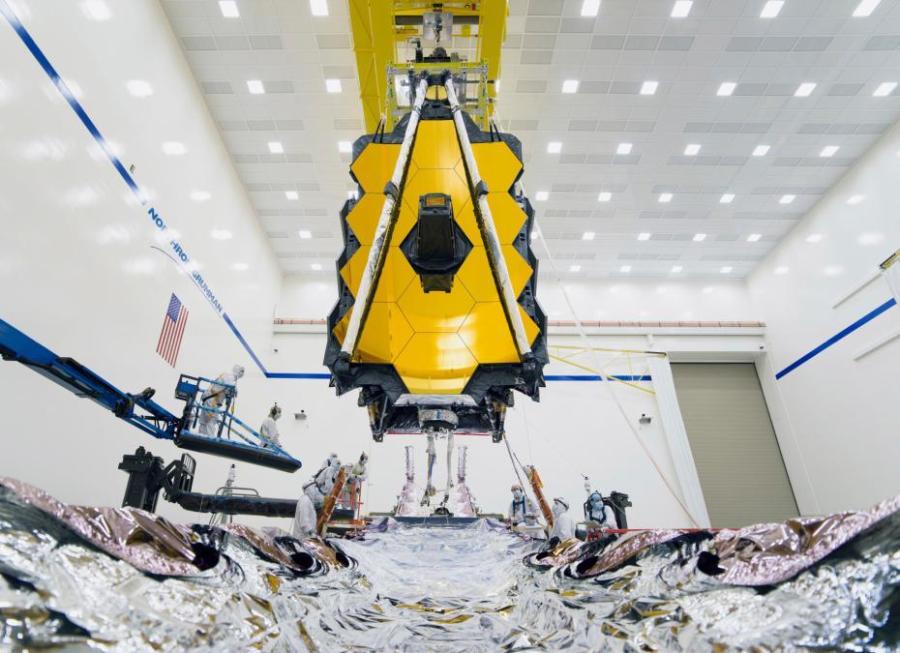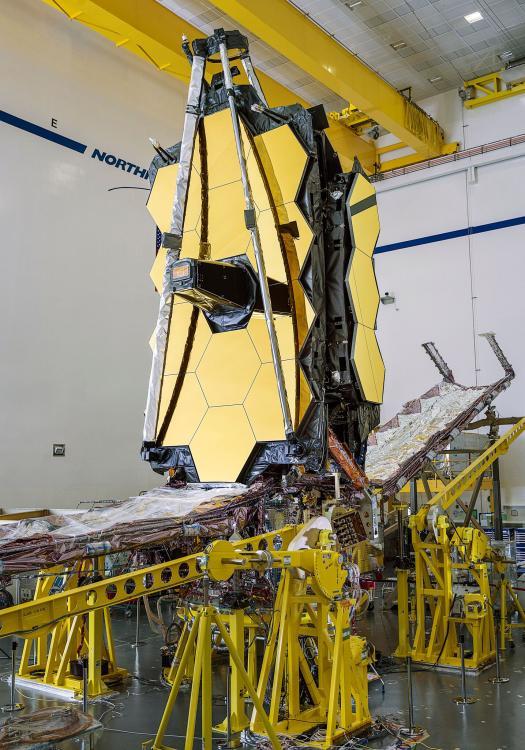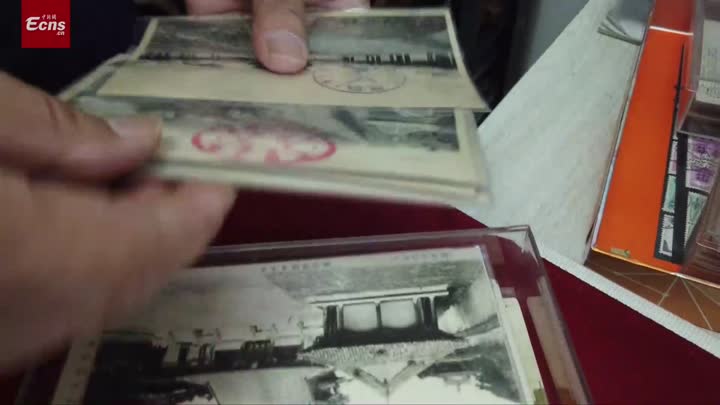
Integration teams carefully guide Webb's suspended telescope section into place above its Spacecraft Element just prior to integration. (Photo/NASA)
Reaching a major milestone, engineers have successfully connected the two halves of NASA's James Webb Space Telescope for the first time at Northrop Grumman's facilities in Redondo Beach, California. Once it reaches space, NASA's most powerful and complex space telescope will explore the cosmos using infrared light, from planets and moons within our solar system to the most ancient and distant galaxies.

The fully assembled James Webb Space Telescope with its sunshield and unitized pallet structures (UPSs) that fold up around the telescope for launch, are seen partially deployed to an open configuration to enable telescope installation. (Photo/NASA)
Reaching a major milestone, engineers have successfully connected the two halves of NASA's James Webb Space Telescope for the first time at Northrop Grumman's facilities in Redondo Beach, California. Once it reaches space, NASA's most powerful and complex space telescope will explore the cosmos using infrared light, from planets and moons within our solar system to the most ancient and distant galaxies.

NASA's James Webb Space Telescope, post-integration, inside Northrop Grumman's cleanroom facilities in Redondo Beach, California. (Photo/NASA)

























